Planetary Science

People
Faculty Graduate Students Research Staff Alumni
Faculty
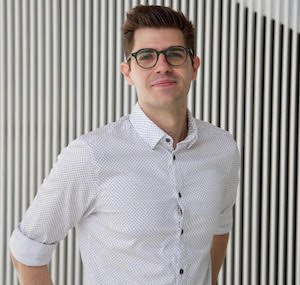
Cauê Borlina, Assistant Professor
Cauê uses magnetic fields from the present and the past to understand planetary formation and evolution, and how these affect the habitability of a planet. In the Purdue Planetary Magnetics Laboratory, Cauê and his group investigates these questions using different tools including micro-paleomagnetism to target the magnetic record of terrestrial and extraterrestrial rocks, and modeling of planetary magnetic field evolution. Cauê is very excited in using these tools to work on multi-disciplinary projects to understand the evolution of protoplanetary disks, magnetic field generation in planets and moons, the role of magnetic fields in habitability, among others.
Cauê earned a BSE in Aerospace Engineering from the University of Michigan. He holds a PhD in Planetary Science from MIT. Before starting at Purdue in Fall 2024 he was a Blaustein Postdoctoral Fellow at Johns Hopkins University.
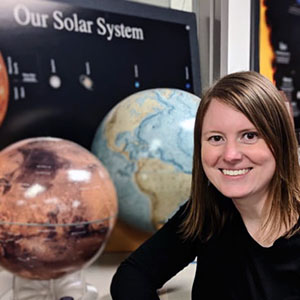
Ali Bramson, Assistant Professor
Ali studies processes that affect the surfaces and distribution of ices on solid bodies in the Solar System. Her research group uses NASA spacecraft remote sensing observations (especially from radar and camera systems) in combination with theoretical modeling and analog studies. Ali's research overlaps with planning efforts for human exploration of Mars and the Moon, especially via in situ resource utilization of ice, and she is also involved in planning concepts for future robotic spacecraft missions.
Ali earned her BS degrees in astrophysics and physics, with a minor in computer science, from the University of Wisconsin-Madison in 2011. She then moved to the University of Arizona's Lunar and Planetary Laboratory (LPL) for her PhD in planetary sciences, with a minor in geosciences, which she received in 2018. After her PhD she stayed at LPL for a postdoc in planetary radar before joining Purdue EAPS in 2020.
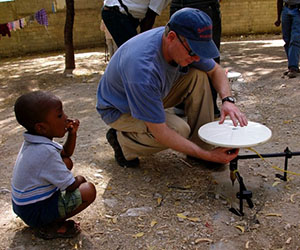
Andy Freed, Professor
Andy’s research utilizes numerical modeling to understand a variety of time-dependent geodynamical processes that involve viscous flow and conductive cooling, including terrestrial projects dealing with crustal and mantle rheology, postseismic processes, and earthquake triggering, and planetary projects such as the full evolution of impact basins from transient crater formation through isostatic adjustment and faulting associated with lava emplacement and cooling. Andy teaches a variety of courses including the popular Geoscience in the Cinema class for non-majors and several graduate classes in geodynamics.
Andy received his PhD from the U. of Arizona in 1998, and after postdoc stints at UC Berkeley and The Carnegie Institution of Washington, joined EAPS in 2003.
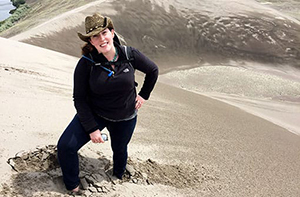
Briony Horgan, Professor
Briony's research program uses data from NASA satellites and rovers, along with lab and field work back on Earth, to understand the surface processes that have shaped Mars and the Moon. She is particularly interested in using mineralogy to investigate weathering and past surface environments on Mars, as well as volcanic, sedimentary, and impact processes on both planets. Briony is a Participating Scientist on NASA's Mars Science Laboratory rover mission and a Co-I on NASA’s Mars 2020 Perseverance rover mission, the first step toward Mars Sample Return. Briony loves getting to conduct field work all over the world, and enjoys outdoor activities outside of work too, including backpacking, camping, kayaking, and scuba diving.
Briony received her BS in Physics from Oregon State University in 2005 and her PhD in Astronomy and Space Sciences from Cornell University in 2010, then was an Exploration Postdoctoral Fellow at Arizona State University until joining EAPS in 2014.
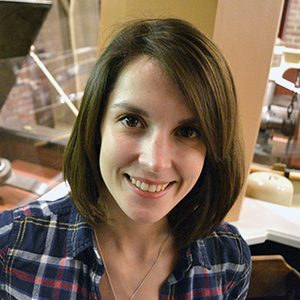
Alexandria Johnson, Assistant Professor
Alexandria's research focuses on the microphysical properties of clouds across planetary atmospheres. This includes understanding the formation (nucleation) and growth of cloud particles, as well as the physical properties of those particles, through laboratory, numerical modeling, and data analysis based studies. Planetary atmospheres of interest include Earth, Mars, Titan, the ancient Moon, and Exoplanets.
Alexandria earned her BS in Physics, with a minor in Mathematical Sciences, from Michigan Technological University in 2009. She earned a PhD in Atmospheric Science from Purdue University in 2014 with a focus on Cloud Microphysics in Earth's atmosphere, and went on to become a Simons Foundation Postdoctoral Fellow at Massachusetts Institute of Technology studying the properties of Exoplanet and Martian cloud particles in the laboratory.
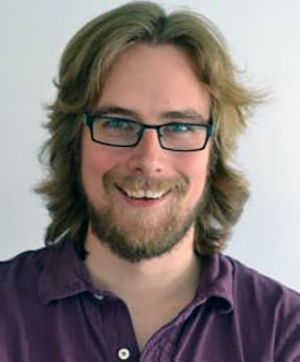
Brandon Johnson, Professor
Brandon's research and teaching is focused on impact cratering, the geophysics of planets, and the various processes that modify planetary surfaces. This includes interest in multiring basins formation, impact ejecta and fragmentation, the early solar system and meteorites, terrestrial bombardment history, ocean worlds, the reduction of friction during long run-out landslides and earthquakes, and understanding the lunar gravity field.
Brandon received his PhD in Physics from Purdue University in 2013. After a Postdoc at MIT working on the GRAIL mission and time as an Assistant Professor at Brown University, he returned to Purdue University as an Associate Professor.
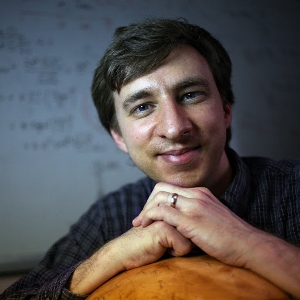
David Minton, Associate Professor
David's research group works on a variety of projects involving the history of the early solar system, the formation of satellites, the cratering history of airless bodies, and the physical and dynamical evolution of asteroids and comets. When not on Purdue's campus, David enjoys spending time with his wife Juliet and his children Leo and Emilia.
David earned his BS degree in Aerospace Engineering from NC State in 2003 and his PhD from the University of Arizona's Lunar and Planetary Laboratory in 2009. Under the tutelage of Prof. Renu Malhotra, he learned about the beauty of orbital mechanics and how we can use the dynamics of small body populations to infer the history of the early solar system. Following his PhD, he worked as a postdoc at the Southwest Research Institute in Boulder, where with Hal Levison and Bill Bottke he explored the formation and early evolution of the solar system. David joined EAPS in 2011.
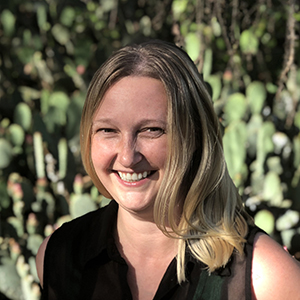
Stephanie Olson, Assistant professor
Stephanie’s research focuses on exoplanet life detection. She uses biogeochemical and climate models to study the interactions between life and its environment on Earth through time, the climates of habitable worlds that may host life, and potential biosignatures that may one day provide evidence for life beyond our solar system.
Stephanie received her PhD in Geochemistry at the University of California, Riverside. She was then a T.C. Chamberlin Postdoctoral Fellow in the Department of the Geophysical Sciences at the University of Chicago prior to joining Purdue EAPS in 2020.
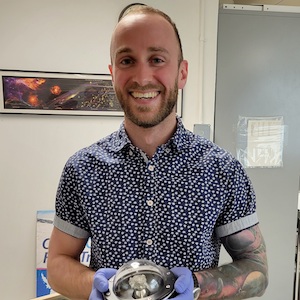
Ben Pearce, Assistant Professor
Ben researches the origin of life on Earth using a combination of laboratory experimentation and theoretical modeling. On the experimental side, he uses vacuum flow systems, spark discharges, and wet-dry cycling to simulate the atmospheric and surface conditions on the early planet that led to the production and polymerization of the building blocks of life. On the theoretical side, he uses chemical kinetic atmospheric modeling, thermodynamics, and quantum computational chemistry to model the early environment and the chemical pathways that produce biomolecules in his experiments.
Ben earned a BSc in Software Engineering from the University of Calgary in 2010 and a BSc in Astronomy from the University of British Columbia in 2015. He then went on to McMaster University to earn an MSc and PhD in Physics and Astronomy with an Astrobiology specialization in 2017 and 2021, respectively. Upon graduating, Ben pursued postdoctoral work in the Earth & Planetary Sciences Department at Johns Hopkins University as a Banting Postdoctoral Fellow from 2021–2023, and a 51 Pegasi b Postdoctoral Fellow from 2023–2024.

Kelsey Prissel, Assistant Professor
Kelsey’s research group uses high-temperature laboratory experiments and geochemical analyses of igneous rocks to develop a crust-to-core perspective of planetary bodies. Research topics encompass planetary differentiation, volcanism, isotope geochemistry, mineralogy, and remote sensing. In addition to a variety of experimental and analytical projects, her work involves synthesis and analysis of "ground truth" materials for remote sensing applications, as well as analog mission and field campaigns for planetary surface exploration.
Kelsey graduated from Brown University in 2014 with an Honors Sc.B. in Geology-Chemistry. She earned a Ph.D. from Washington University in St. Louis in 2020 and then held a postdoctoral position at the Carnegie Institution for Science Earth and Planets Laboratory. Beginning 2021, she worked as a Research Scientist at NASA Johnson Space Center until joining Purdue EAPS in 2024.

Tabb Prissel, Assistant Professor
Tabb's research group explores the origins of igneous rocks through integration of natural sample studies, experimental petrology, mission data, geochemical modeling, and field expeditions. General topics include the evolution of planetary crusts, primary magmas, magma oceans and impact melt seas, magma-rock interactions, and mission enabling science.
Tabb received a B.Sc. degree in the geosciences and minor in astronomy, summa cum laude, from Minnesota State University Moorhead. He attended Brown University for graduate school earning M.Sc. and Ph.D. degrees in the geological sciences. Tabb was then appointed to the research faculty at Rutgers University and awarded the Gordon McKay Postdoctoral Research Fellowship with the Lunar and Planetary Institute. Tabb joined the federal workforce in 2022 as a permanent civil servant with NASA at the Johnson Space Center specializing in lunar and planetary petrologic studies before joining Purdue in 2024.

Mike Sori, Assistant Professor
Mike and his group use data from NASA's robotic spacecraft missions interpreted with numerical models to study planetary geophysics and surface processes throughout the solid worlds of the solar system. Research topics include planetary interiors, planetary volcanism including cryovolcanism (ice volcanism) and ferrovolcanism (metal volcanism), and studies of planetary ices. Solar System objects studied include the Moon, Mars, Ceres, Mercury, the icy moons of giant planets, and Kuiper Belt Objects. Mike and his group also study how best to conduct future geophysics-themed missions to other planets in the Solar System.
Mike received his PhD in planetary science from MIT in 2014 after earning Bachelors degrees in math and physics from Duke University in 2008, and joined Purdue EAPS in fall 2020.
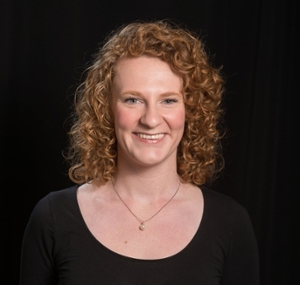
Michelle Thompson, Associate Professor
Michelle's research program focuses on the analysis of returned samples, including lunar soils collected by Apollo astronauts and asteroidal particles from the Hayabusa mission. She studies how grains on the surfaces of airless planetary bodies are altered due to their exposure to interplanetary space, a process known as space weathering. She uses coordinated techniques including electron microscopy, spectroscopy, and laboratory experiments to investigate changes in the microstructure, chemistry, and optical properties of planetary materials as a result of space weathering.
Michelle earned her BSc degrees in Geological Engineering and Biology from Queen’s University in Kingston, ON, Canada in 2011. She earned her MS and PhD from the University of Arizona’s Lunar and Planetary Laboratory in 2016 and went on to be a NASA Postdoctoral Fellow at Johnson Space Center before coming to Purdue.
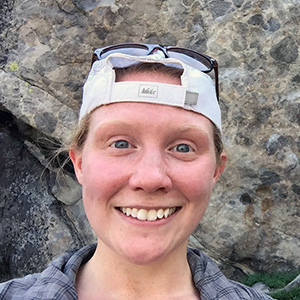
Marissa Tremblay, Assistant Professor
Marissa is a noble gas geochemist who studies Earth and planetary surface processes over a broad range of temporal and spatial scales, and her research program utilizes a combination of laboratory measurements, field work, and numerical modeling. Her planetary research includes reconstructing the thermal histories of Lunar and Martian meteorites, as well as investigating the noble gas systematics of terrestrial analog materials.
Marissa earned her BA in Environmental Science from Barnard College in 2012 and her PhD from the Department of Earth and Planetary Science at the University of California, Berkeley in 2017. Before coming to Purdue, she held postdoctoral positions at the University of California, Davis, and the Scottish Universities Environmental Research Centre.
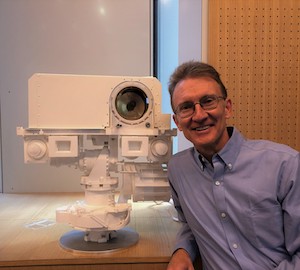
Roger Wiens, Professor
Roger was a developer and Flight Payload Lead of NASA’s Genesis cosmochemistry mission. Subsequently, he developed and led exploration with the ChemCam laser remote sensing instrument for the Curiosity rover (landed 2012). He now leads the SuperCam instrument team on the Perseverance rover (landed 2021). With its international team, SuperCam uses three spectroscopy techniques, a microphone, and high-resolution imaging to study remote targets. Dr. Wiens is a Senior Fellow of Los Alamos National Laboratory (LANL). In 2016, he was knighted by the government of France for “forging strong ties between the French and American scientific communities” and for “inspiring many young, ambitious earthlings.” He holds an honorary doctorate from the University of Toulouse and is the namesake of Asteroid 41795 WIENS. His book, Red Rover: Inside the Story of "Robotic Space Exploration from Genesis to the Mars Rover Curiosity (Basic Books, 2013), describes for the public his teams’ earlier space adventures.
Roger Wiens holds Physics degrees from Wheaton College and the University of Minnesota. His thesis was on the composition of the Mars atmosphere measured in the laboratory in martian meteorites. Roger moved from LANL to Purdue to join the EAPS faculty in 2022.
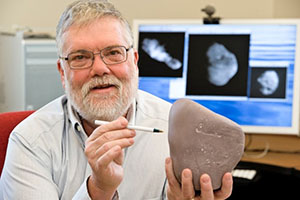
In Memoriam: Jay Melosh, 1947–2020
Jay was a Distinguished Professor of EAPS and also held appointments in the departments of Physics and Astronomy and Aeronautical and Aerospace Engineering. He received his PhD in Physics and Geology from Caltech. His principal research interests were impact cratering, planetary tectonics, and the physics of earthquakes and landslides. His research included studies of the giant impact origin of the moon, the K/T impact that extinguished the dinosaurs, the ejection of rocks from their parent bodies, and the origin and transfer of life between the planets. He was a science team member of NASA's Deep Impact mission that successfully cratered comet Tempel 1 and flew by comet Hartley 2, and he was a Co-Investigator of the GRAIL mission that returned detailed data on the Moon's gravity field. Asteroid #8216 was named "Melosh" in his honor. He was elected to the U.S. National Academy of Sciences and the American Academy of Arts and Sciences, and was awarded the McCoy award of Purdue University.